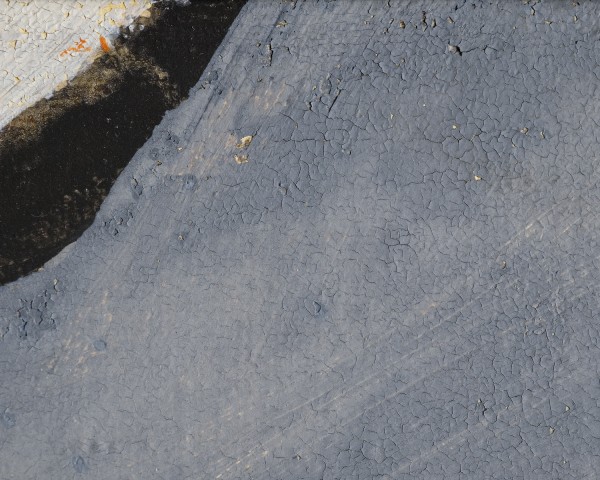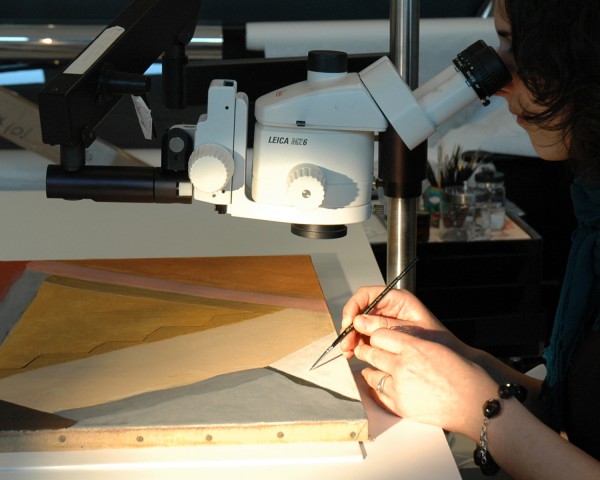Arthur Dove’s Primitive Music (1944) is in the studio for treatment to stabilize flaking paint.
In a diary entry dated May 8, 1944, Arthur Dove describes this painting as a “painting in tempera.” Often, Dove used a homemade tempera mixture, made from a whole egg, dammar resin, stand oil, and water. Usually, Dove used tempera for just the first layers of a painting that he then finished with oil paint or wax emulsion. But in Primitive Music, Dove used the tempera paint on its own, for a smooth, translucent paint film with a velvety, matte surface.
This close-up image from the top right corner of the painting shows microflaking of the paint layer, the reason Primitive Music is in the conservation studio. The fine pattern of cracks and insecure paint in the blue and white areas makes the painting extremely fragile.
Flaking paint is stabilized using a small brush to wick dilute adhesive into the cracks. It is necessary to work through the microscope in order to control the application of the adhesive. The conservator is careful to use materials that will not yellow with age and will not darken the paint or otherwise change the soft, matte quality of the surface.



